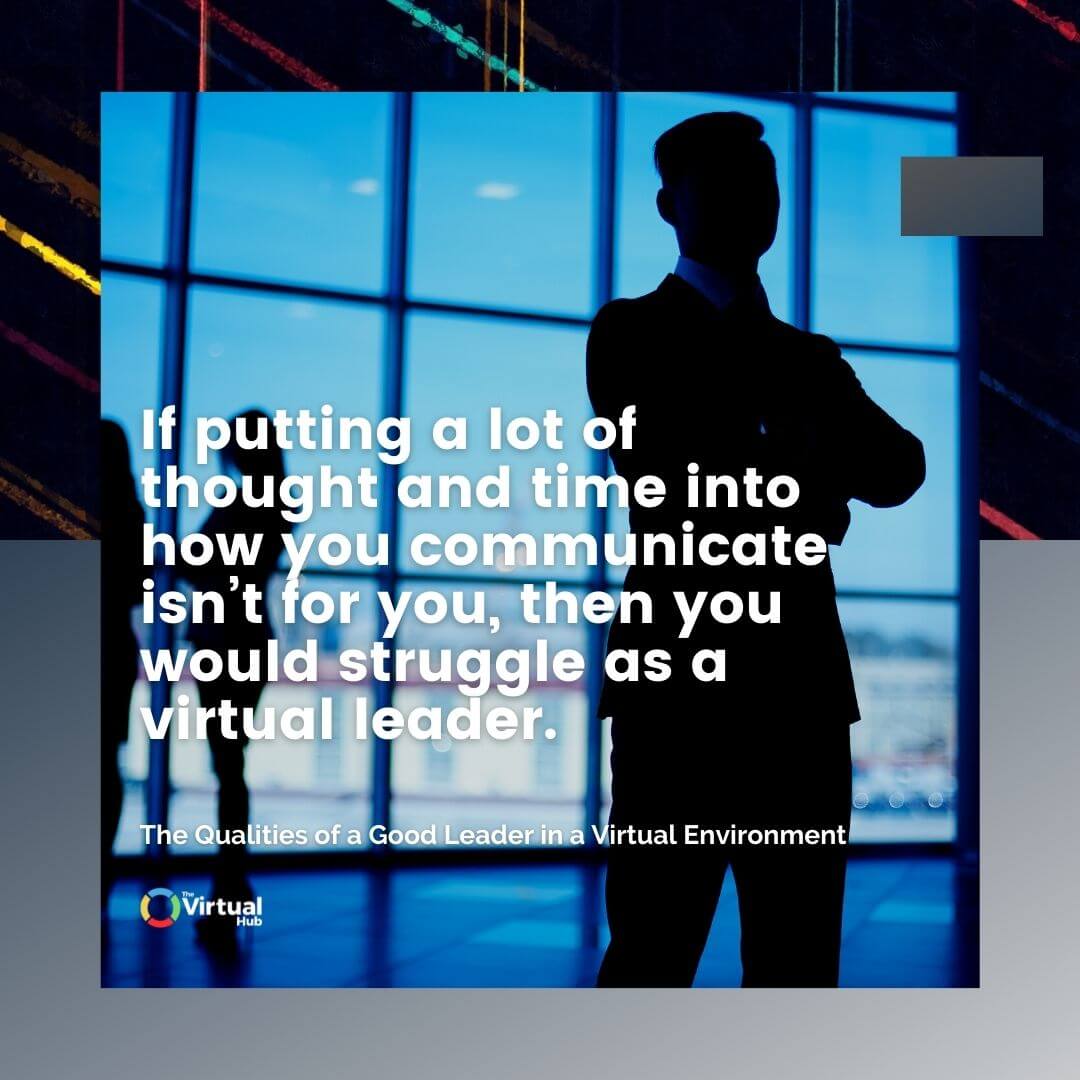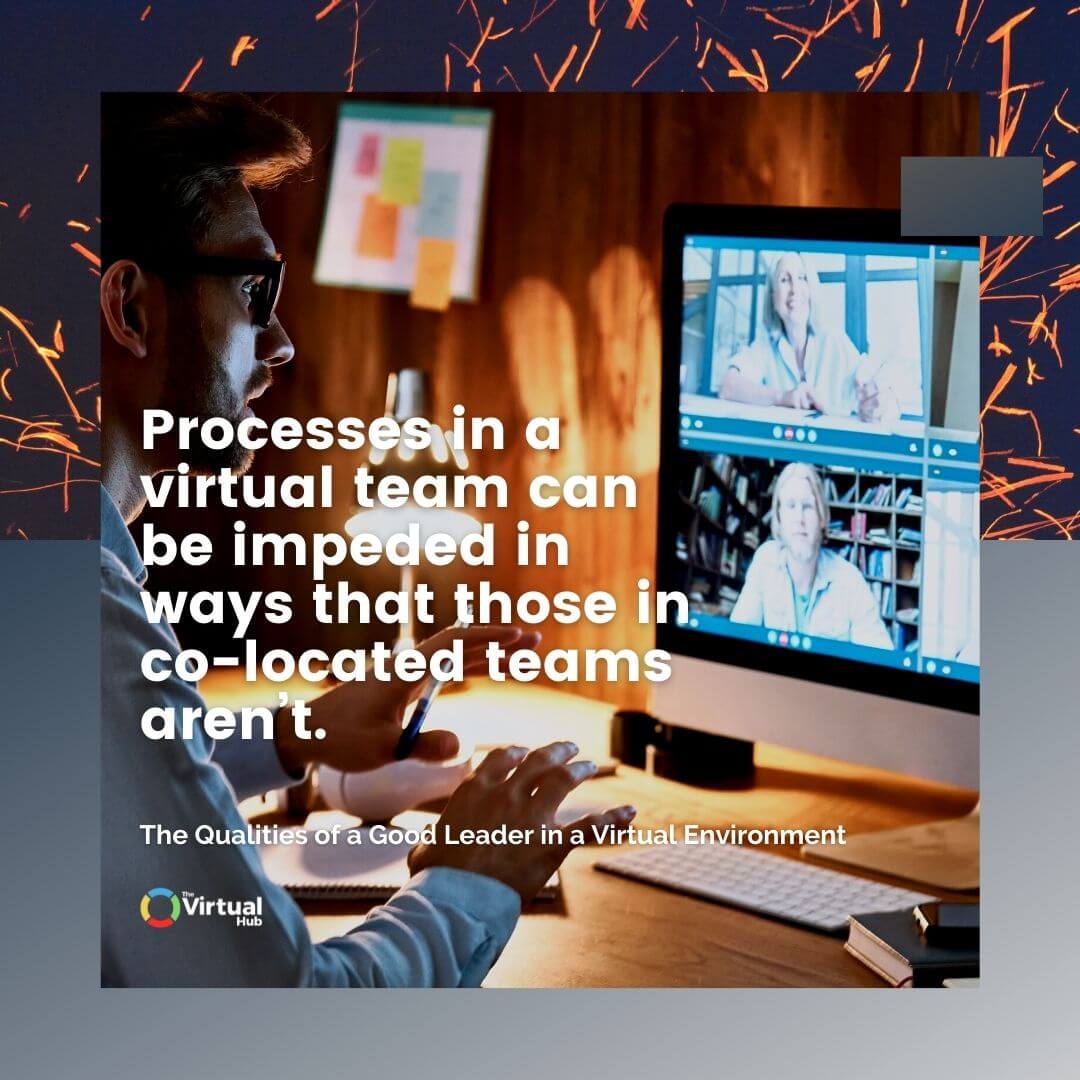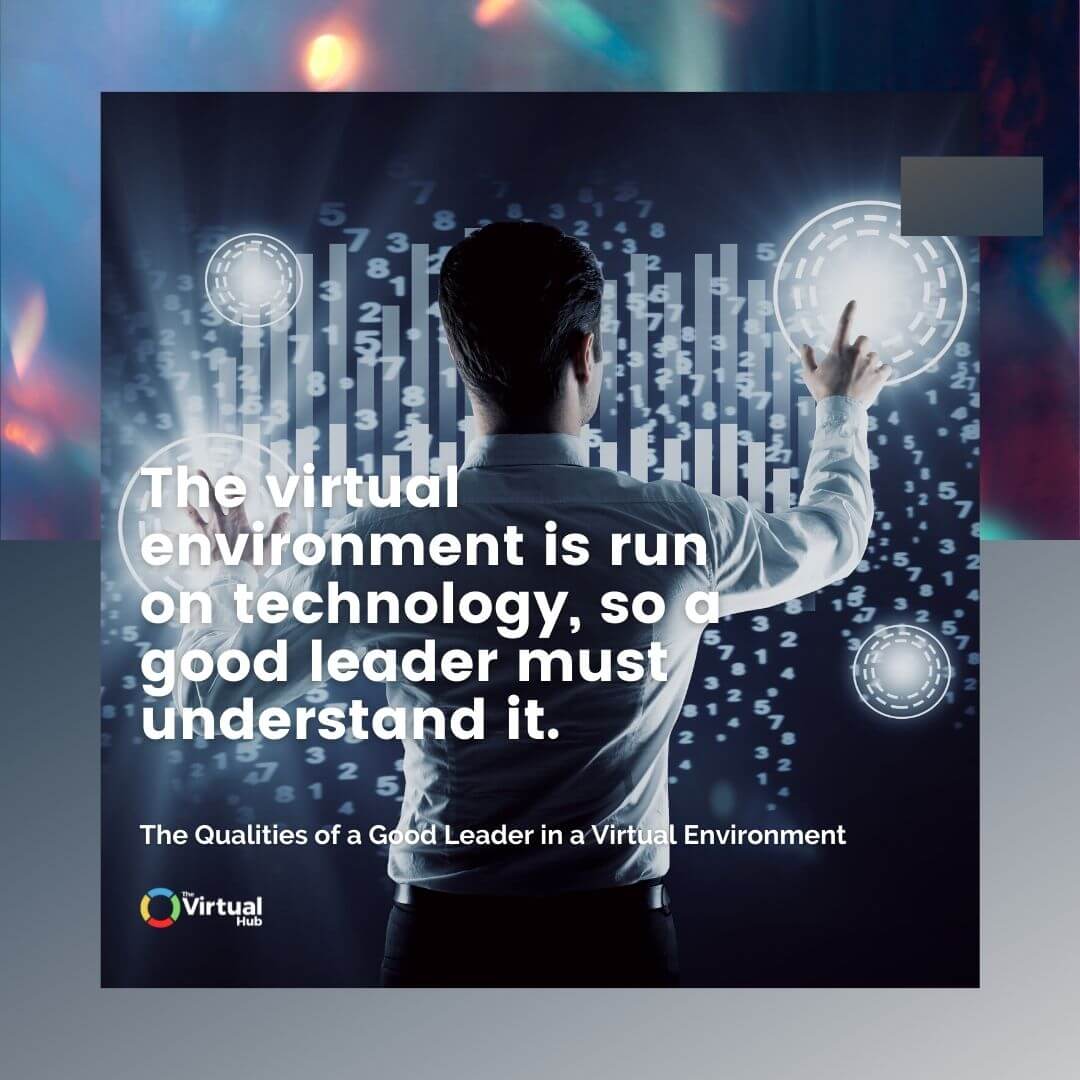Leadership is never an easy path. When you throw a virtual environment into the mix, there are even more challenges.
The qualities of a good leader are thrown more sharply into focus when you need to successfully manage a team that is entirely remote. There’s no such thing as “management by walking around,” or any of those leadership styles that benefit from being in an office.
The fundamentals of being a good leader remain the same, but there are unique aspects to managing well remotely. You’ve got to consider the logistical issues of scheduling across time zones, communicating virtually and overall, how you’re going to foster teamwork remotely.
Here’s what you need to know about leadership qualities for a great virtual leader.
RELATED: In Charge From Afar: How To Manage People Virtually
Everything You Need to Know About Virtual Leadership
You can click on these links below to jump on a specific topic:
About Virtual Leadership
Virtual leadership is the practice of leading a team when members are not in the same physical location. In many cases, virtual leaders focus heavily on technology to communicate with remote workers and provide direction.
While the concept of virtual leadership is relatively new, it is becoming increasingly common as more businesses adopt remote work arrangements.
There are many advantages to virtual leadership, including the ability to:
reach a larger pool of talent
create a more diverse team
save on costs associated with office space and other overhead expenses
However, there are also some challenges that come with leading virtual teams. These include:
the need for strong written and verbal communication skills
an increased reliance on technology
the potential for feelings of isolation among virtual workers
The key to successful virtual leadership is to be aware of these challenges and take steps to overcome them. By doing so, you can create a productive and cohesive team that can achieve great things, regardless of location.
Leadership Styles
When it comes to leading remote teams, there's no one-size-fits-all approach. Remote leaders are able to tailor their virtual leadership strategies to the specific needs of their team.
Here are four virtual leadership styles that you may want to consider for your team:
Transformational Leadership
Transformational leaders are focused on inspiring change and motivating others to reach their full potential. They do this by providing a clear vision, setting high standards, and providing employees with the resources they need to be successful.
Transformational leaders are often able to create passionate and engaged teams that are constantly striving to improve.
Authoritarian Leadership
Authoritarian leaders are those who make decisions without input from others. This style of virtual leadership can be effective in some situations, such as when there is a need for quick decision-making or when employees are not yet ready to take on more responsibility.
However, this leadership style can also lead to feelings of frustration and resentment among team members. It's important to use this style sparingly and only when it is absolutely necessary.
Participative Leadership
This style of virtual leadership focuses heavily on actively involving team members in decision-making. Participative leaders solicit input from employees and take their suggestions into consideration when making decisions.
This style of leadership often leads to higher levels of employee engagement and satisfaction. It can also help to build trust and improve communication within the team.
Servant Leadership
Servant leaders put the needs of their team before their own. They focus on helping others develop and grow, and they're always looking for ways to make things easier for their team members.
Servant leaders typically have strong emotional intelligence skills and are able to build trust and respect within their team.
Which type of leader you need will depend on the specific needs of your team. If you’re not sure which style would work best, try experimenting with different approaches until you find one that suits your team’s needs.
6 Essential Skills of Effective Virtual Leadership
Being a Connector
As a virtual leader, it’s vital that you’re able to create a human connection, foster a strong business culture, navigate an ever-changing professional landscape, and lead employees toward a shared sense of purpose.
Research from Harvard shows that virtual leaders need to develop a common identity and understanding for their virtual teams, as without it, virtual team members are especially prone to “us versus them” thinking and the perils of incomplete information.

You can’t have silos developing in remote teams--that’s when the virtual workforce starts working against one another, or loses sight of overall goals. Similar to traditional leadership roles, a virtual leader needs to be a connector--the glue among the team.
Finding ways to bond as a virtual team is one of the tasks virtual leaders should do to encourage that teamwork. You can’t usually do an in-person team-building session, but you can set up “norms” that become part of the virtual culture.
For example, what if everyone met for virtual coffee on Fridays? There are a lot of things you can do, but you have to gear those activities for a remote environment.
Being a Communicator
“Digital dependence often impedes information exchange, however. In face-to-face teams, participants can rely on nonverbal and contextual cues to provide insight into what’s going on. When we walk into an in-person meeting, for example, we can immediately sense the individual and collective moods of the people in the room—information that we use (consciously or not) to tailor subsequent interactions. Having to rely on digital communication erodes the transmission of this crucial type of intelligence.”
Have you ever seen the mess resulting from misinterpreted or poorly-executed written communications?
Most virtual teams rely on tools such as instant messaging apps for quick communication needs and email for detailed messages, but those are missing the vital contextual clues that voice or in-person communication provide.

Tone and body language are important parts of the process, so with those often missing, you need to be extra-good with your words!
In the end though, you can’t be averse to picking up the phone (or video chat). Sometimes, it’s not worth ping-ponging back and forth--make sure your meaning was made clear, rather than have someone offended because they misunderstood.
Being an Information Manager
A virtual environment is entirely based on information and how it is managed. There’s a real danger of team members going into information overload if there aren’t clear processes in place to manage their work.
An excellent virtual leader is a master at documenting and managing information. They don’t allow decisions or ideas to slip through the cracks--they enforce a “document everything” policy with their team, too.

Being a Process Analyst
The most successful remote teams have got processes down to a fine art. As a leader, you need to at least be able to give your team a place to start, with processes clearly articulated in steps.
Over time, team members can offer suggestions to improve processes, but if you haven’t given them a start, it can take time to rise above the chaos. Processes in a virtual team can be impeded in ways that those in co-located teams aren’t.
When you’re in an office, you might simply walk over and ask someone a question; when you’re working remotely, you send them a message, wait for a response, have questions about the response, then ping them back. The back and forth can be a productivity killer!

Being Transparent
A good leader in a virtual world is one who is transparent with their team. No one likes working with a hidden agenda--it only creates an atmosphere of distrust.
When you are working virtually, it is important to be clear with your team about your goals, objectives, and the realistic expectations you have of them. This way, everyone is on the same page and can work together towards a common goal.
Furthermore, being transparent also means being open to feedback. A good leader will always listen to their team and take their input into account when making decisions. After all, a team is only as strong as its leader!
Being Adaptable
Being a successful leader in a virtual environment requires a certain amount of adaptability. After all, you're not always going to be able to rely on traditional methods of communication and management.
When you're dealing with a remote team, you need to be able to adjust your approach to fit the situation. Be willing to try new things. If one method of communication isn't working well, don't be afraid to experiment with something else.
Remember that not every team member is going to operate in the same way. Be flexible in your expectations and give people the freedom to work in their own way.
5 Key Characteristics of Effective Virtual Leadership
Enjoys Being Present
You may be separated by distance, but that’s no excuse to keep your head down behind your screen. Virtual leaders get involved--they enjoy being present among their team and they know what’s happening among their people.
This can take some extra effort on the part of the leader. It’s all too easy to get caught up in getting tasks done, especially when your team aren’t immediately around you. A present virtual leader takes deliberate steps to engage many employees, to give them feedback, and to understand them better.
An effective virtual leader gets involved and enjoys being present among their team.
Has Technical Knowledge
If there’s one thing that can stall the effectiveness of virtual teams, it’s having to muddle around figuring out the tools and software you will use to facilitate your operations.
When you think of in-house teams, new employees tend to have all the tools they need to do their jobs from day one --the same should go for virtual teams.
It’s important that you understand and have key systems in place, particularly communication, project management, and any special tools that directly help to get the job done. The virtual environments are run on technology, so a good leader must understand it.
As Michael D. Watkins points out in an article for Harvard Business Review:

“It’s essential not to sacrifice reliability in a quest to be on the cutting edge. If the team has to struggle to get connected or wastes time making elements of the collaboration suite work, it undermines the whole endeavor.”

Comfortable with Delegation
Effective leadership means trusting your team and expecting that trust in return.
In a virtual environment, you might be tempted to hold back, just in case someone might let you down, but this is not an efficient way to operate.
Trust that your team members are capable and will perform the tasks you give them to an expected standard. Being comfortable with delegation is important, otherwise you will become the bottleneck in the team. After all, you can’t do everything, right?
Has Patience
If you’re not in close proximity to team members, some things will inevitably take more time--get used to it! You’re saving on things like office overhead, but in return, you have to expect that communication is not as fast and things might not happen as quickly.
Great leaders tend to have patience anyway, but you really need to have that honed when you work virtually. Using the right project management tools to assign and track tasks can go a long way toward maintaining efficiency, but it will never be perfect.

Invests in Relationships
What makes a person loyal to your company? What makes team members keen to stay on?
Usually, it is a sense of belonging and feeling valued, which is developed when virtual leaders take the time to invest in relationships.
Relationships are always more challenging at a distance, so an effective virtual leader takes the time to invest in them. They take deliberate actions in the name of building those relationships, while encouraging employees to do the same with each other.
Final Thoughts
The qualities of a good leader for a virtual team mirror those required of any leader in many ways. However, aspects such as communication and team-building tend to take extra effort when you work virtually.
Your entire team may be out of site, but in no way can they be out of mind. An effective virtual leader finds ways to stay engaged with the team and fosters a sense of belonging among the members. They use a combination of the right tools and the right communication method. They understand that not everything happens as quickly as they might want, but they also know how to use delegation to their advantage.
In the end, being a good leader is about understanding and connecting with people. The best virtual leaders do this in a way that promotes productivity, creativity, and ultimately success.
Up Next:
